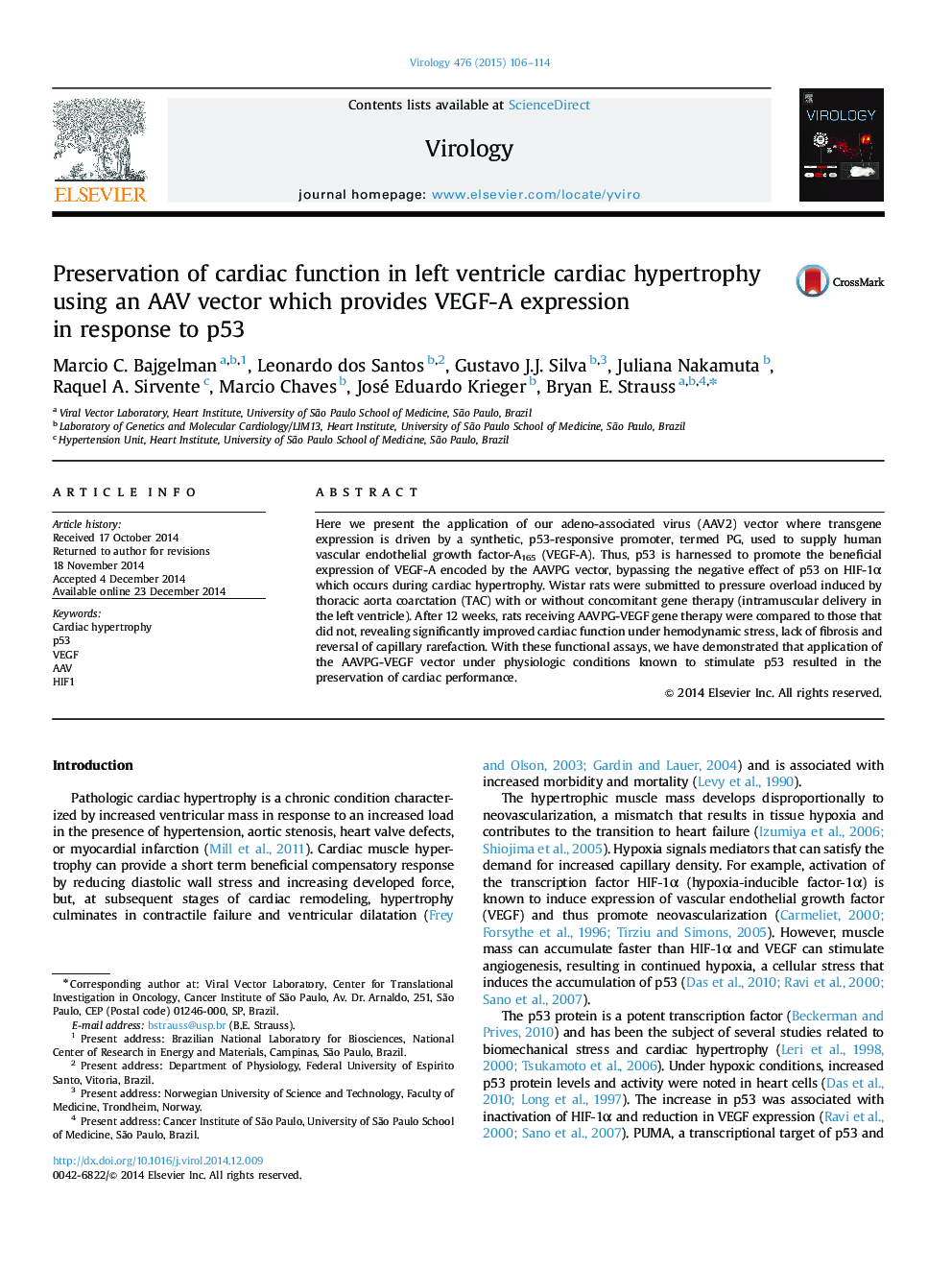| Article ID | Journal | Published Year | Pages | File Type |
|---|---|---|---|---|
| 6139634 | Virology | 2015 | 9 Pages |
â¢Application of AAVPG, a vector whose transgene expression is controlled by p53.â¢p53-dependent expression links vector function to physiologic conditions.â¢On-demand expression of VEGF-A165 tested in rat model of cardiac hypertrophy.â¢This gene therapy approach was beneficial, preserving cardiac function.â¢AAVPG may be an appropriate gene therapy vector for many indications.
Here we present the application of our adeno-associated virus (AAV2) vector where transgene expression is driven by a synthetic, p53-responsive promoter, termed PG, used to supply human vascular endothelial growth factor-A165 (VEGF-A). Thus, p53 is harnessed to promote the beneficial expression of VEGF-A encoded by the AAVPG vector, bypassing the negative effect of p53 on HIF-1α which occurs during cardiac hypertrophy. Wistar rats were submitted to pressure overload induced by thoracic aorta coarctation (TAC) with or without concomitant gene therapy (intramuscular delivery in the left ventricle). After 12 weeks, rats receiving AAVPG-VEGF gene therapy were compared to those that did not, revealing significantly improved cardiac function under hemodynamic stress, lack of fibrosis and reversal of capillary rarefaction. With these functional assays, we have demonstrated that application of the AAVPG-VEGF vector under physiologic conditions known to stimulate p53 resulted in the preservation of cardiac performance.
